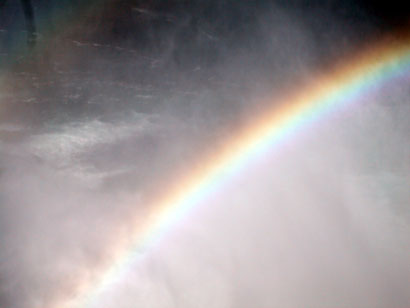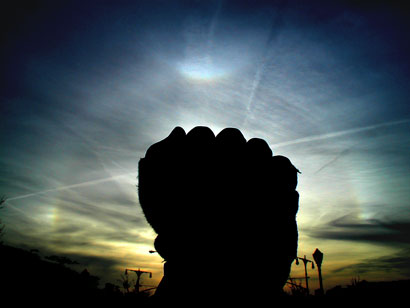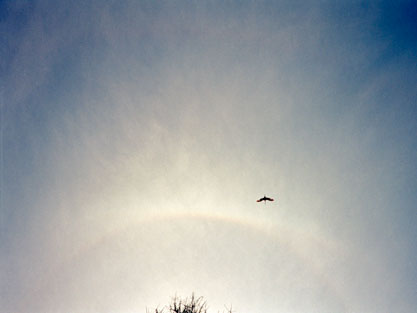Index Of Refraction Of Plexiglass
Refraction
Give-and-take
introduction
Willebrord Snel (1580–1626) Netherlands. "Although he discovered the law of refraction, a ground of modern geometric optics, in 1621, he did not publish it and only in 1703 did information technology become known when Huygens published Snell'southward law in Dioptrica." Snell too studied navigation and proposed the method of triangulation, which is the foundation of geodesy (the branch of mathematics dealing with the measurement of features on the Earth). For some reason, the constabulary named after the man is spelled incorrectly. Snel the man vs. Snell the constabulary.
| sin θ i | =constant |
| sin θ r |
and so
northward one sin θ1 =n 2 sin θtwo
"This form of Snell'south law was really published by René Descartes (1596–1650) French republic in La Dioptrique (1637). Snell did discover the relationship merely articulated it in a dissimilar fashion. Today it is the form used by Descartes that is called Snell'south police force."
The index of refraction.
where…
| n = | index of refraction |
| c = | speed of light in a vacuum |
| 5 = | speed of light in a medium |
The index of refraction is somewhat related to density, as one would await. This graph is for transparent minerals. Someone should make one for liquids and see what happens.
Index of refraction for selected materials (λ = 590 nm)
| material | alphabetize |
|---|---|
| acetone | ane.36 |
| acrylic (lucite, plexiglas) | 1.495 |
| air (−15 °C) | 1.00030942 |
| air (0 °C) | 1.00029238 |
| air (+15 °C) | one.00027712 |
| air (+thirty °C) | one.00026337 |
| air (+60 °C) | i.00023958 |
| alcohol, ethyl (grain) | i.361 |
| booze, methyl (wood) | 1.328 |
| amber | 1.546 |
| barium fluoride | i.475 |
| benzene | 1.501 |
| butter (twoscore °C) | one.455 |
| butter (threescore °C) | 1.447 |
| calcite | 1.486 |
| cd/dvd | 1.55 |
| cocoa butter (xl °C) | i.457 |
| diamond | 2.418 |
| eglestonite | 2.49 |
| emerald | one.576 |
| emerald, synth flux | ane.561 |
| emerald, synth hydro | i.568 |
| epoxy (opticon) | 1.545 |
| middle, cornea | 1.38 |
| center, aqueous sense of humor | one.33 |
| eye, lens embrace | 1.38 |
| center, lens | 1.41 |
| middle, vitreous humor | 1.34 |
| fluorite | 1.387 |
| franklinite | 2.36 |
| material | alphabetize |
|---|---|
| drinking glass, borosilicate (pyrex) | one.475 |
| drinking glass, crown (soda-lime) | 1.523 |
| drinking glass, cobweb (fiberglas) | i.560 |
| glass, flint (45% lead) | 1.618 |
| glass, fused silica | 1.4585 |
| glycerol | 1.473 |
| helium (gas) | 1.000036 |
| helium (liquid) | ? |
| hydrogen (gas) | 1.000140 |
| hydrogen (liquid) | 1.0974 |
| lithium fluoride | 1.392 |
| milk | 1.346 |
| oil, microscope | 1.515 |
| oil, mineral | 1.470 |
| oil, vegetable (50 °C) | 1.47 |
| perovskite | 2.38 |
| quartz, crystalline | one.544 |
| quartz, fused silica | ane.459 |
| cherry | 1.77 |
| salt | 1.516 |
| sapphire | 1.77 |
| sphalerite | 2.428 |
| topaz | 1.62 |
| turpentine | 1.472 |
| ulexite | 1.49 |
| vacuum | 1 exactly |
| h2o (ice) | i.309 |
| water (liquid, 0 °C) | 1.33346 |
| water (liquid, 20 °C) | ane.33283 |
| water (liquid, 100 °C) | one.31766 |
| water (vapor) | 1.000261 |
| zinc selenide | 2.630 |
| zircon, loftier | one.96 |
| zircon, depression | 1.92 |
| zirconia, cubic | 2.173 |
apparent depth
Don't get in the water.
total internal reflection
calorie-free traveling from a deadening medium to a fast medium
disquisitional angle
| n 1 sin θ1 | = | due north 2 sin θ2 | |||
| n i sin θ c | = | north 2 sin 90° | |||
| sin θ c | = | north 2 | in general | ||
| n 1 | |||||
| sin θ c | = | 1 | when the second media is air | ||
| n 1 | |||||
junior mirage
 |  |
 |  |
- It is sometimes possible to see over the horizon. The superior mirage or Fata Morgana. "Fata Morgana (superior mirage), the Italian proper name of the enchanted, one-half sister of King Arthur. Italian writers and poets described these effects equally seen over the straights of Messina, between Italia and Sicily. Although the effects occur worldwide, the Italian proper noun sticks. (From Greenler'southward volume?)"
- Quote from somebody, "Under highly stable atmospheric conditions (typically on calm, clear nights), the radar axle can exist refracted almost directly into the footing at some distance from the radar, resulting in an area of intense-looking echoes. This "anomalous propagation" phenomenon (normally known as AP) is much less mutual than ground clutter. Certain sites situated at low elevations on coastlines regularly detect "sea return", a phenomenon similar to ground clutter except that the echoes come up from ocean waves."
dispersion
intro
rainbow
 |  |
 |  |
halo
 |  |  |
Dispersion is generally highest in solids and lowest in gases.
Dispersion is often measured in terms of the coefficient of dispersion, which is defined as the difference betwixt the refractive indices for for two prominent lines in the spectrum of hydrogen — the blueish F line at 486.i nm and the red C line at 656.3 nm.
northwardf −nc
Another common measure of dispersion is the dispersive power.
where n D is the index of refraction for the yellow D line of sodium at 589.0 nm.
Use of a single number to quantify dispersion is rather misleading. Index and wavelength are not linearly related. Dispersion is all-time quantified equally the rate of change of alphabetize of refraction with wavelength.
For most transparent materials, a graph of alphabetize versus wavelength is curve with a few full general characteristics.
- The alphabetize of refraction is larger for shorter wavelengths; thus, its slope is always negative.
- Dispersion (the rate of modify of index with wavelength) is greater for shorter wavelengths; thus, the graph starts out steep and gradually levels off.
birefringence
Calcite is a common, transparent mineral. It tin can be constitute throughout the globe, merely some of the best samples were originally found in Republic of iceland. Pieces of this mineral are easily split (or cleaved equally the geologists say) into parallelogram-faced prismatic chunks. Nonmetallic minerals that cleave hands were chosen spar in German language and then calcite is sometimes also known as Iceland spar. It is of little economic importance by itself (although information technology is a component of limestone, which is used to brand cement), only is of some scientific importance. It has been known for several centuries that light transmitted through calcite takes ii paths. This can all-time exist seen by laying a large crystal of it on a page of text. Every letter can be seen twice. This phenomenon is known equally double refraction or birefringence.

A ray of lite incident on a doubly refractive or birefringent cloth divides into two rays: an ordinary ray (or o ray or ω [omega] ray) and an extraordinary ray (or e ray or ε [epsilon] ray). As the proper noun implies, the o ray behaves in an "ordinary" way, following Snell'southward law without a problem. The ratio of the sine of the angle of incidence to the sine of the bending of ordinary refraction is a abiding. The east ray gets its name because it does not obey this rule.
falls apart here…
Birefringence is only a property of solids
When the incident angle is just right, the o and e rays will follow the same path and the birefringence cannot exist seen geometrically. At all other angles, the the two rays volition follow different paths. Thus, the index of refraction for extraordinary rays is also a continuous function of direction. The index of refraction for the ordinary ray is constant and is independent of management
The index of refraction for the extraordinary ray is a continuous function of direction. The index of refraction for the ordinary ray is independent of direction. The two indices of refraction are equal only in the management of an optic axis.
The measure out of birefringence (δ) [delta] is the difference between the indices of refraction of the 2 rays.
δ =due northe −due northo
In some materials (like calcite) n e <due north o and the birefringence is less than zippo (that is, the e ray is refracted less than the o ray) and the material is said to be optically negative. In other materials (similar quartz) the reverse is truthful and these materials are said to be optically positive. Materials that practice non show birefringence are said to be isotropic (like diamond); that is, they behave the aforementioned no mater what the alignment of the crystal is relative to the incident ray.
| optical behavior | comment | examples |
|---|---|---|
| isotropic (linear) | single refraction | gases, liquids, glasses, diamond |
| uniaxial negative | double refraction due east ray travels faster | calcite, tourmaline, sodium nitrate |
| uniaxial positive | double refraction o ray travels faster | ice, quartz, rutile |
| biaxial | triple refraction | mica, perovskite, topaz |
| uniaxial minerals | no | ne | δ | |
|---|---|---|---|---|
| beryl | Be3Al2(Sihalf-dozenOeighteen) | i.602 | 1.557 | -0.045 |
| calcite | CaCO3 | 1.658 | 1.486 | −0.172 |
| calomel | Hg2Cl2 | ane.973 | 2.656 | +0.683 |
| cinnabar | HgS | 2.905 | three.256 | +0.351 |
| hematite | Fe2O3 | 2.940 | 3.220 | +0.287 |
| water ice | H2O | 1.309 | i.313 | +0.014 |
| lithium niobate | LiNbOthree | two.272 | 2.187 | −0.085 |
| magnesium fluoride | MgF2 | 1.380 | 1.385 | +0.006 |
| quartz | SiOii | ane.544 | 1.553 | +0.009 |
| cherry-red | Al 2Oiii | ane.770 | 1.762 | −0.008 |
| rutile | TiO2 | 2.616 | two.903 | +0.287 |
| peridot | 1.690 | 1.654 | −0.036 | |
| sapphire | AliiO3 | i.768 | 1.760 | −0.008 |
| sodium nitrate | NaNOiii | 1.587 | 1.336 | −0.251 |
| tourmaline | one.669 | 1.638 | −0.031 | |
| zircon, high | ZrSiOfour | 1.960 | ii.015 | +0.055 |
| zircon, low | ZrSiO4 | i.920 | 1.967 | +0.047 |
| biaxial minerals | α | β | γ | |
|---|---|---|---|---|
| borax | 1.447 | ane.469 | one.472 | |
| epsom salt | MgSO4·7(HiiO) | 1.433 | 1.455 | 1.461 |
| mica, biotite | i.595 | 1.640 | one.640 | |
| mica, muscovite | ane.563 | i.596 | 1.601 | |
| olivine | (Mg,Fe)iiSiO | 1.640 | one.660 | one.680 |
| perovskite | CaTiO3 | 2.300 | 2.340 | 2.380 |
| topaz | ane.618 | 1.620 | 1.627 | |
| ulexite | 1.490 | one.510 | one.520 | |
No condition is permanent.
Index Of Refraction Of Plexiglass,
Source: https://physics.info/refraction/
Posted by: melvinbeady1972.blogspot.com


0 Response to "Index Of Refraction Of Plexiglass"
Post a Comment